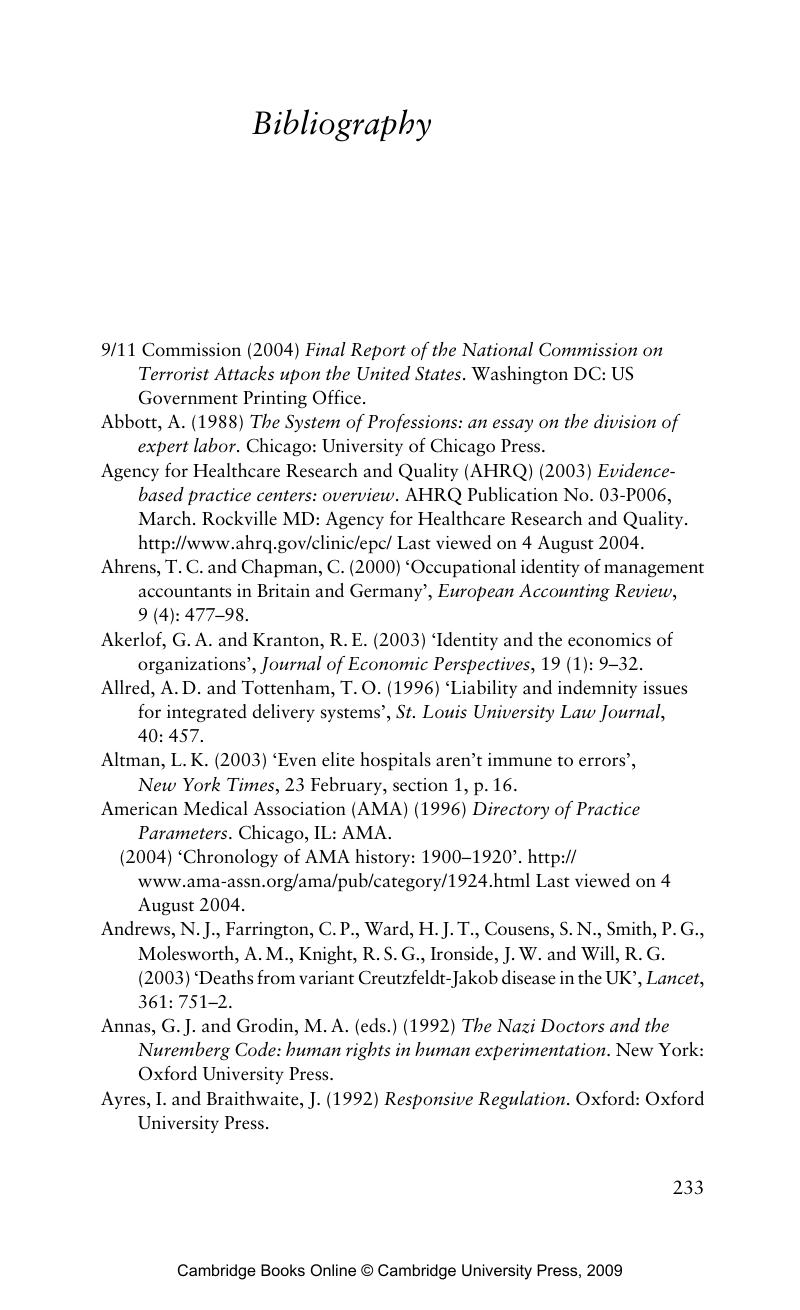Book contents
- Frontmatter
- Contents
- List of tables
- Notes on contributors
- Acknowledgements
- List of abbreviations and acronyms
- 1 Organizational encounters with risk: an introduction
- 2 Organizational rituals of risk and error
- 3 ‘Ways of seeing’: understandings of risk in organizational settings
- 4 Risk and rules: the ‘legalization’ of medicine
- 5 Organizational responses to risk: the rise of the chief risk officer
- 6 Incentives, risk and accountability in organizations
- 7 Mathematizing risk: models, arbitrage and crises
- 8 Interdependencies within an organization
- 9 Restoring reason: causal narratives and political culture
- Bibliography
- Name index
- Subject index
- References
Bibliography
Published online by Cambridge University Press: 22 September 2009
- Frontmatter
- Contents
- List of tables
- Notes on contributors
- Acknowledgements
- List of abbreviations and acronyms
- 1 Organizational encounters with risk: an introduction
- 2 Organizational rituals of risk and error
- 3 ‘Ways of seeing’: understandings of risk in organizational settings
- 4 Risk and rules: the ‘legalization’ of medicine
- 5 Organizational responses to risk: the rise of the chief risk officer
- 6 Incentives, risk and accountability in organizations
- 7 Mathematizing risk: models, arbitrage and crises
- 8 Interdependencies within an organization
- 9 Restoring reason: causal narratives and political culture
- Bibliography
- Name index
- Subject index
- References
Summary

- Type
- Chapter
- Information
- Organizational Encounters with Risk , pp. 233 - 256Publisher: Cambridge University PressPrint publication year: 2005



